In contented scenes of bucolic industry, or depictions of rowers settled like seeds in a pod, their oars distorted by grace and speed into the organic curves of unfurling petals or leaves, the world of early British linocuts seems an orderly, untroubled place. Musicians held in the warm embrace of a concert hall bend and flow with each note; workers pulling cables set to their task with no less verve or purpose.
The variety of modern life, from manual labour to high art, pervades this exhibition of linocuts produced by staff and students of the Grosvenor School of Modern Art in Pimlico, in a short but intense period during the 1920s and ’30s. With the onset of the Second World War their work sank into obscurity, and this exhibition is the first time that real scholarly attention has been given to what Hana Leaper, writing in the catalogue, describes as ‘one of the most aesthetically cohesive, yet critically undervalued, groups in British art’.
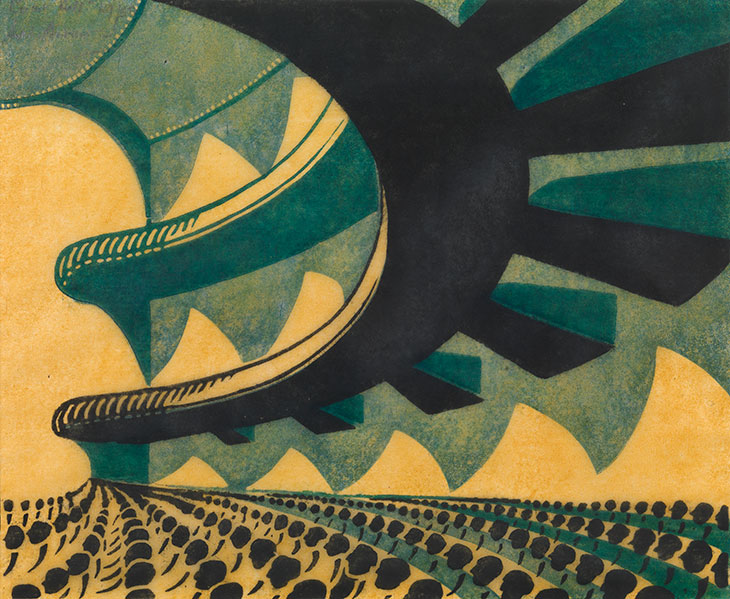
Concert Hall (1929), Sybil Andrews. Photo: Osborne Samuel, London; © The Estate of Sybil Andrews
Printmaking had a resurgence in the early 20th century, with small presses such as Eric Gill’s St Dominic’s Press established as a peculiarly British form of modernity, that sought new expressions through means that had their roots in the comforting traditions of a pre-industrial past. Linocut prints were both a part of this trend and a rejection of it: an entirely novel form – linoleum itself had only been invented as a floor covering in the 1860s – that had some prominent early adopters like Kandinsky and Gaudier-Brzeska, but was otherwise without tradition.
It was the perfect medium for the Grosvenor School, which, set up in 1925 by the teacher, artist and wood engraver Iain McNab, spurned convention by admitting students regardless of their qualifications to attend courses for as much or as little time as they chose. Made from cork and linseed oil on a canvas backing, linoleum was affordable and easy to cut with a knife or chisel, unlike other media such as woodblock or copper that required specialist tools. Claude Flight, who taught at the school from 1926, saw linocut as an inherently democratic, accessible art form that could be bought ‘at a price which is equivalent to that paid by the average man for his beer or his cinema tickets’. The small scale of the prints on display reflects these egalitarian aims, as do the quotidian subjects chosen by Flight and his nine most prominent students. These include a surprisingly high number of works by female and non-European – specifically Australian – artists who were attracted to the school by its relaxed terms.
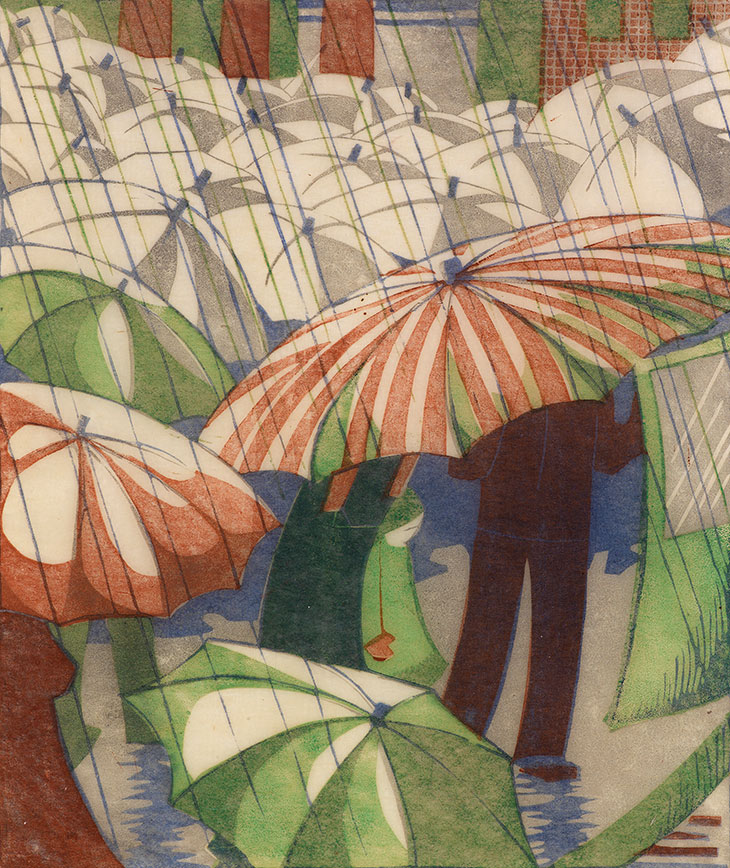
Wet Afternoon (1929–30), Ethel Spowers. Photo: Osborne Samuel, London; © The Estate of Ethel Spowers
In their wholehearted embrace of representation, brilliant colours, and often joyous subject matter, the Grosvenor School linocuts can look twee. Pattern unites and animates so many of these designs, exemplified by the sweeping forms used to exquisitely decorative effect by Sybil Andrews. Ethel Spowers’ artfully irregular patterns flutter white across the sheet, as a flock of startled birds, umbrellas, pieces of paper, or the ranks of perused newspapers in Special Edition (1936), conveying an atmosphere of contentment that appears wilfully naïve in an era scarred by catastrophe.
And yet a closer look allows one to see the Grosvenor School linocuts as entirely in tune with the times: though not classicising in the manner usually associated with the return to order of the interwar years, their emphasis on pattern surely indicates a similar longing for stability and structure. Even so, it is a highly provisional stability, in perpetual tension with the sensations of speed and the sounds and thrills of modern urban life that link the Grosvenor School to the pre-war avant-garde movements of Cubism, Futurism and Vorticism.
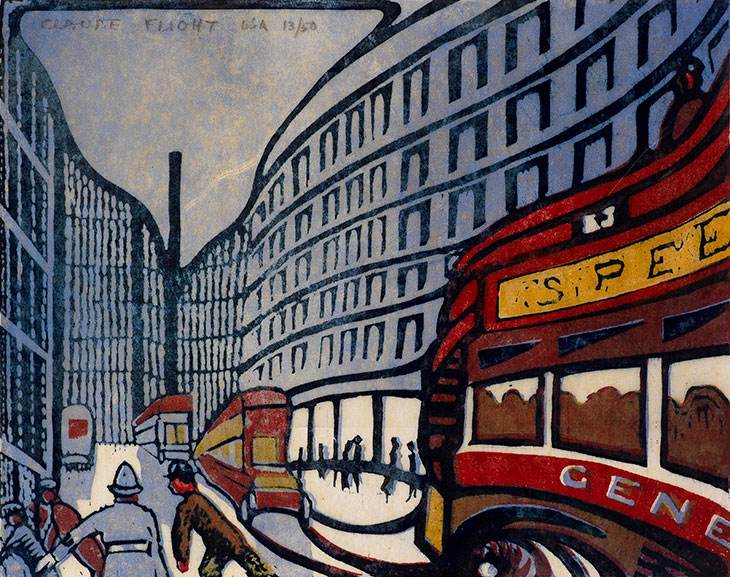
Speed (1922), Claude Flight. Photo: Elijah Taylor (Brick City Projects); © The Estate of Claude Flight, all rights reserved (2019)/Bridgeman Images
Illustrating this link, a selection of prints by C.R.W. Nevinson, Paul Nash and Edward Wadsworth use monochrome, hard edges and fractured forms to introduce drama and relentless dynamism to images of war. A poster by Edward McKnight Kauffer exploits the graphic potential of Vorticism, the rhythmic motion of birds in flight heightened through tonal contrasts and the simplification of forms and planes. Grosvenor School artists borrowed these techniques, and in Flight’s Street Singers (1925), voices radiate in lines to act like a prism on the surrounding space. In his depictions of skaters and runners, Cyril Power repurposes Boccioni’s well-known sculpture of 1913, Unique Forms of Continuity in Space, allowing him to imbue the most benign subjects with a subtle sense of disquiet. The repeating pattern of ranks of students in an examination hall lends a claustrophobic and even sinister air, while the tilt of the top deck of a bus is similarly jarring. The figures in The Tube Train (c. 1934), their faces mask-like and their postures uniform as they read the morning paper, surely take their cue from David Bomberg’s poem to urban alienation, Ghetto Theatre (1920).
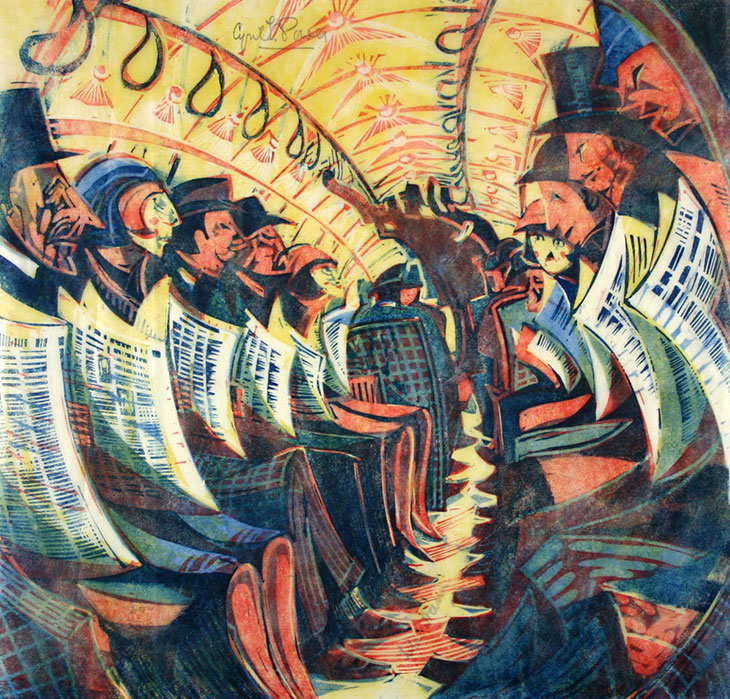
The Tube Train (c. 1934), Cyril Power. Photo: London Transport Museum Collection; © The Estate of Cyril Power, all rights reserved (2019)/Bridgeman Images
The apparent lack of gravitas and popular appeal of these linocuts belies the ambition and sense of artistic purpose that drove the Grosvenor School students. Herbert Read set the tone when in 1935 he wrote of abstraction that ‘all the artists of any intellectual force belong to this movement’. Today we have a chance to reappraise the work of those pioneering artists who forged a different path, repurposing pre-war artistic vocabularies to explore the possibilities for figuration in a world transformed by war.
‘Cutting Edge: Modernist British Printmaking’ is at Dulwich Picture Gallery, London, until 8 September.
Unlimited access from just $16 every 3 months
Subscribe to get unlimited and exclusive access to the top art stories, interviews and exhibition reviews.

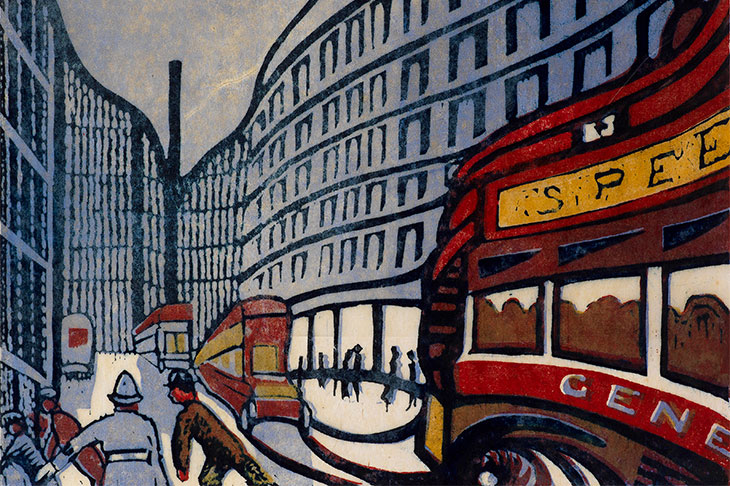
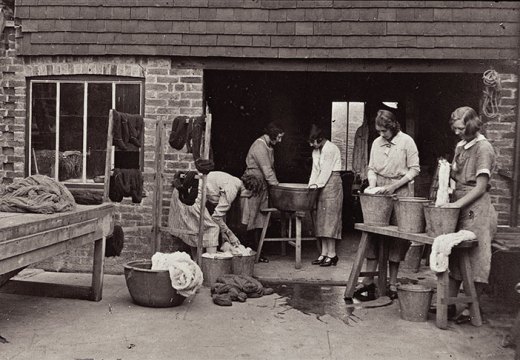
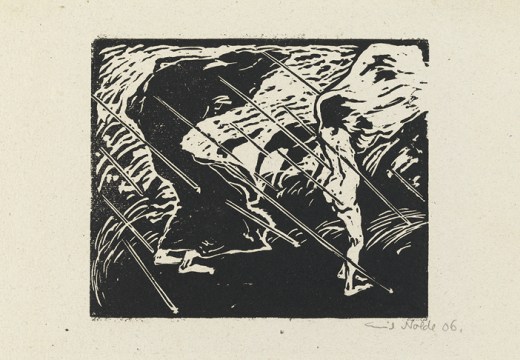
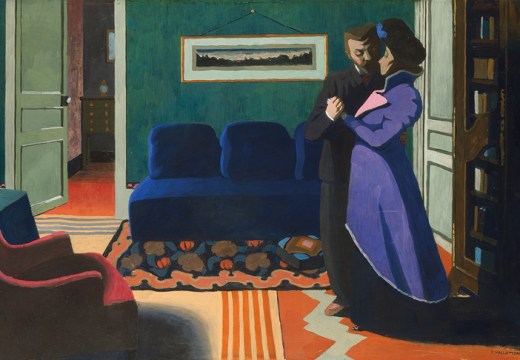









![Masterpiece [Re]discovery 2022. Photo: Ben Fisher Photography, courtesy of Masterpiece London](http://www.apollo-magazine.com/wp-content/uploads/2022/07/MPL2022_4263.jpg)
It’s time for the government of London to return to its rightful home